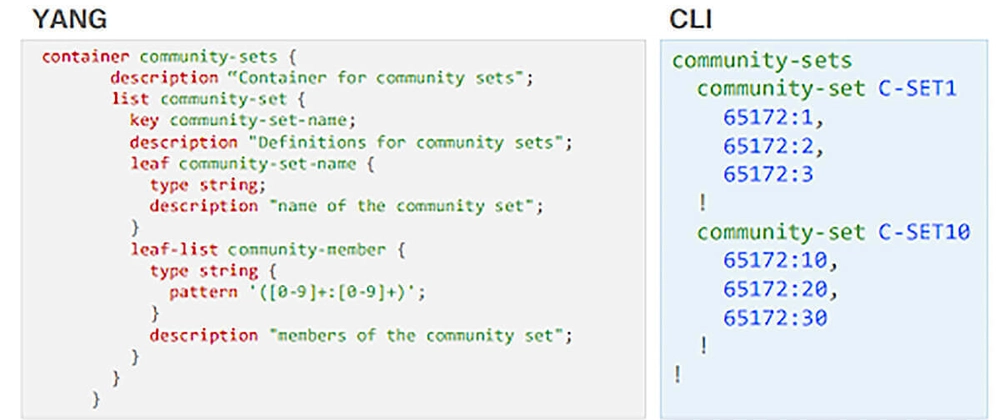You may know JSON and YAML and how they are sometimes used to write app configurations. But when it comes to networking devices we have something similar called YANG (Yet Another Next Generation).
In the battle of config formats, JSON and YAML are vibing at the afterparty— YANG’s out here managing the entire venue.
If you've ever fiddled with networking devices, and configuration protocols, or just wondered how big telecom giants manage to speak a common language across millions of devices, you have your answer now.
YANG (Yet Another Next Generation) is a data modeling language, primarily used to model configuration and state data manipulated by the NETCONF protocol. It's now expanded to several protocols such as RESTCONF, CLI and more.
It’s not some fringe tech; it’s the backbone of modern network automation, powering SDN (Software-Defined Networking), cloud infra, IoT setups, and any scenario where zillions of networking devices need to stay sane and synced
🎨 How Does It Look?
Here’s a quick taste:
module example-device {
namespace "http://example.com/device";
prefix dev;
container device-config {
leaf hostname {
type string;
}
leaf enabled {
type boolean;
default true;
}
}
}
Easy to read, right? Just think of it as a typed, structured blueprint describing:
- What kind of data/config exists (containers, lists, leaves)
- What types (int, string, boolean, enums, etc.)
- Constraints (defaults, ranges, uniqueness)\
🎯 Should You Learn YANG?
Yes, if:
- You’re diving into network automation, SDN, or telco software.
- You want to build network-aware tooling (e.g., Ansible plugins, monitoring systems).
- You like the idea of declarative, structured models controlling physical infra.
No, if:
- You're happy in pure app dev land and don’t touch network hardware.
- You get XML hives. (YANG outputs often use XML-based protocols.)
🕹️ Why Do Devs Care?
Let's understand how it is helping developers.
1. Vendor-Neutral Config Magic
Tired of writing custom code for every network vendor's gear? YANG gives a standard format, so config tools like NETCONF clients can dynamically adapt to devices.
2. API Generation
YANG models can auto-generate REST APIs (via RESTCONF), turning dumb boxes into programmable, API-first systems.
3. Validation & Versioning
Think JSON Schema, but better. YANG handles complex validation rules, deprecation markers, and backward-compatible changes like a pro.
4. Automation-Ready
DevOps + NetOps = YANG + NETCONF + Ansible/Puppet integrations = fully automated network deployments.
📜 How’s It Different from JSON or XML?
- Yang is much more strongly typed.
- It supports imports and includes.
- It has tight constraints and data hierarchies
- Purpose-built for network config/state data.
⚡ Real-World Usage
- Telecom Giants: Nokia, Huawei, Cisco —all use YANG models.
- Cloud Providers: Automating data center switches and routers.
- SDN Controllers: OpenDaylight, ONOS—they breathe YANG.
- IoT Networks: Ensuring millions of devices have unified configs.
🔥 Final Thoughts:
YANG may sound niche, but it’s the lingua franca of modern networking. It’s elegant, declarative, versioned, and scalable. If infra is your playground, YANG is the tool that lets you describe that playground precisely.
Wanna Dive Deeper?
RFC 7950 - YANG 1.1 Spec
OpenConfig Models (Actually Used IRL)



Top comments (0)